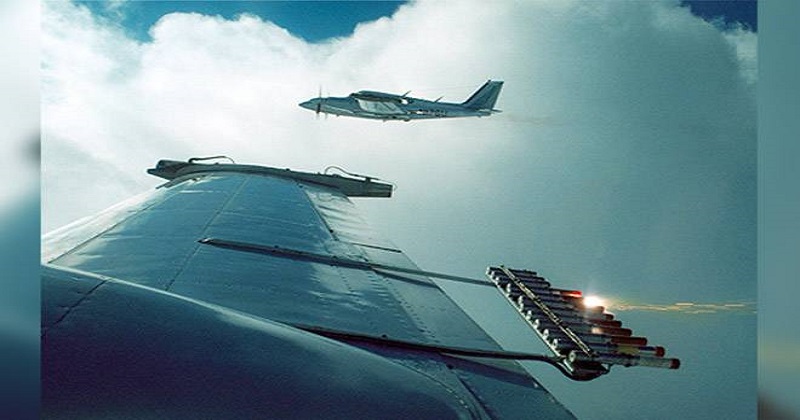
Despite the havoc caused by the monsoon in some portions of India, Dubai just managed to conjure up some rain. This city in the United Arab Emirates found some relief after battling temperatures over 50 degrees Celsius using a new method of cloud seeding in which they charged clouds with electricity. In India, cloud seeding has been used on multiple occasions to mitigate drought for some time now.
‘Cloud seeding is a process that creates artificial rain,’ explains Kondala Murali Mohan, a scientist with Krishi Vigyan Kendra (Medak). Helicopters or planes are used to release chemicals such as silver iodide, potassium iodide and dry ice into the atmosphere. As a result, these particles attract water vapor in the air, resulting in cumulonimbus clouds and finally rain. It usually takes half an hour for this method to produce rain. Injecting chemicals into cloud portions can cause rain to form more quickly. Zapping the top layers gives the fastest results.

Harmful Effects
However, these experiments are harmful to the environment. ‘The method can lead to acidification of the oceans, ozone layer depletion, and an increase in atmospheric carbon dioxide,’ the scientist said. Silver is a heavy, toxic metal that harms plants, humans, and animals. Cloud seeding is also an expensive method. It costs around USD 200 for one foot of rainfall.’ However, with so many possible side effects, is it worth it? ‘India is an agricultural nation. During droughts and standing crops, cloud seeding can provide some relief. In the long run, it is not advisable’, said Murali.
According to weather blogger Sai Praneeth B, who is known on Twitter as ‘Andhra Pradesh Weatherman’ said, ‘clouds start precipitating at a point called Lifted Condensation Level. In cloud seeding, chemicals like silver iodide and hygroscopic salts are used as catalysts to reach that level. After that, the cloud molecules coalesce to form bigger ones that lead to rainfall. Recently, such experiments were carried out at the Rayalaseema region in Andhra Pradesh and Karnataka’.
He says such experiments can result in ecological imbalances: For instance, coastal Andhra region receives plenty of rainfall while Rayalaseema region is arid.’ By causing rain in the latter region on a day when it wasn’t supposed to rain naturally, we are affecting the amount of rainfall the coastal areas normally receive. Cloud seeding is still in its experimental phase. The results do not seem to be worth the effort and cost that the whole exercise requires’. It is worth noting that Karnataka’s two-year cloud seeding program cost the state a staggering Rs 89 crore. Several states in India that were experiencing droughts have used this technique to regulate rainfall, including Maharashtra, Karnataka, and Andhra Pradesh. Hindustan Aeronautics Limited signed an MoU with IIT Kanpur last year for the delivery of Do-228 or HS 748 aircraft for the institute’s cloud seeding projects.

How Can We Go Green?
Dubai’s experiment is said to be more environmentally friendly than traditional methods due to the use of battery-operated drones to administer the electric charge. Dubai’s rain creation project in 2017 was carried out by the University of Reading, which was contracted by the UAE Research Program for Rain Enhancement Science. In a release, the university had said: ‘The electric charge method works by making droplets stick to one another, thereby increasing growth rate. This will also be administered by aircraft, but by small, battery-powered, remote-controlled aircraft’ and therefore environmentally friendly’.
Read more: Do you sing? Would you like to relax instantly? Amazing health benefits of Music
Know This?
As a result of the English weather being perpetually rainy, Prince William and Kate Middleton used cloud seeding service to ensure their wedding was dry. China seeded clouds to prevent rain during the 2008 Beijing Olympics. To ensure that it rains before the ceremony, rockets were launched into the sky with chemical propellants.

Post Your Comments